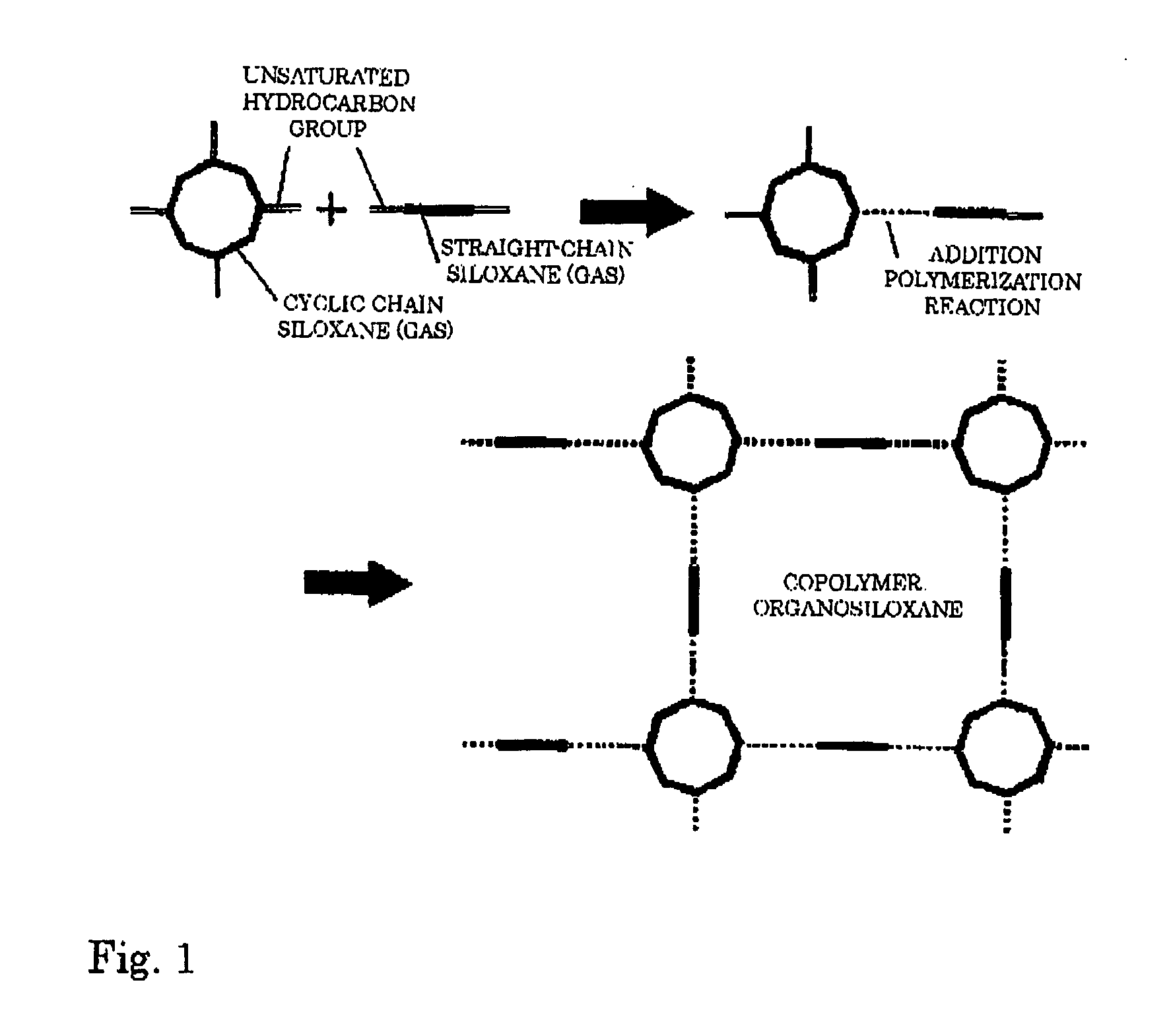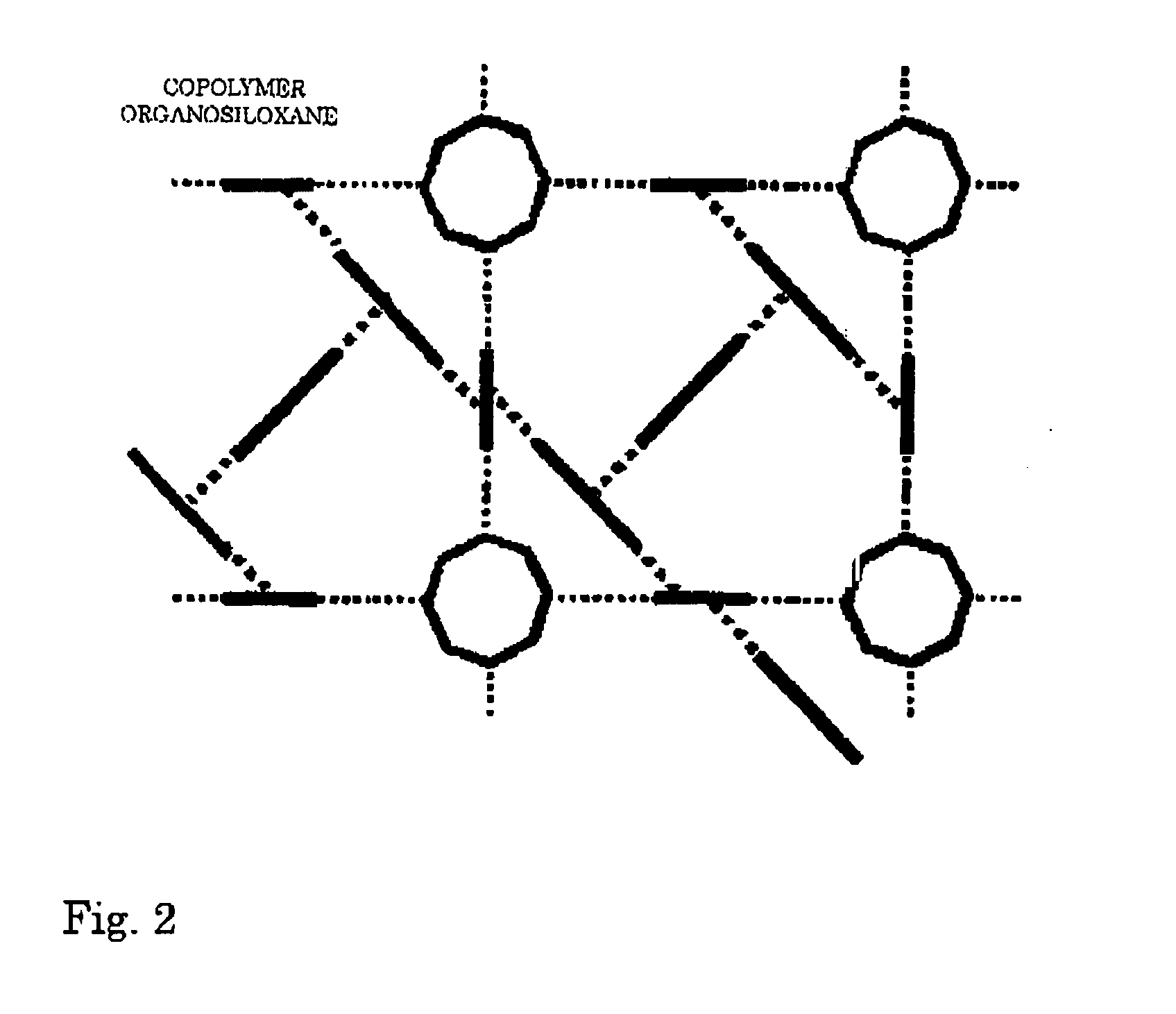Organic siloxane copolymer film, method and deposition apparatus for producing same, and semiconductor device using such copolymer film
a copolymer film and organic siloxane technology, applied in the direction of vacuum evaporation coating, coating, transportation and packaging, etc., can solve the problems of low yield of starting raw materials, the film density of polymer formation by using the spin coating method cannot reach a sufficient bridge density, and the film strength decline. achieve high bridge density, high film quality, and high film quality
- Summary
- Abstract
- Description
- Claims
- Application Information
AI Technical Summary
Benefits of technology
Problems solved by technology
Method used
Image
Examples
embodiments
[0060] Hereunder, the embodiments of the present invention shall be explained in more detail. The embodiment according to the present invention is only one example, and should not be limited to the specific example described in the present invention.
first embodiment
[0061] The organosiloxane copolymer film according to the present invention comprises a 4-membered cyclosiloxane composed of 4 silicon atoms and 4 oxygen atoms shown in general formula (6) below, as one of the raw materials, and as one embodiment of the first organosiloxane monomer with cyclosiloxane backbone.
General Formula (6): 4-Membered Cyclosiloxane Having a Plurality of Unsaturated Hydrocarbon Groups.
[0062] In this formula, R11V, R12V, R13V, R1a, R21V, R22V, R23V, R2a, R31V, R32V, R33V, R3a, R41V, R42V, R43V, and R4a denote hydrocarbon groups, phenyl groups or hydrogen. Specifically, tetramethylvinyl-tetramethyl-cyclotetrasiloxane (TMVTMCTS) of chemical formula (7), tetravinyl-tetramethyl-cyclotetrasiloxane (TVTMCTS) of chemical formula (8), tetramethylvinyl-tetrahydro-cyclotetrasiloxane (TMVTHCTS) of chemical formula (9), and tetravinyl-tetrahydro-cyclotetrasiloxane (TVTHCTS) of chemical formula (10) are included in one of the examples of the first organosiloxane with cyc...
second embodiment
[0067] The organosiloxane copolymer film according to the present invention uses the first organosiloxane monomer with cyclosiloxane backbone and the second organosiloxane monomer with straight-chain siloxane backbone as raw materials. One embodiment of the second organosiloxane with straight-chain siloxane backbone, is a straight-chain divinyl siloxane having a molecular structure where the terminal silicon atom of the straight-chain siloxane shown in general formula (12) below is bonded directly to vinyl group (CH2═CH—) or bonded to C═C site of the unsaturated hydrocarbon group.
General Formula (12): Divinyl Straight-Chain Siloxane
[0068] In the formula, R′1a, R′1b, R′11V, R′12V, R′13V, R′2a, R′2b, R′21V, R′22V, and R′23V denote hydrocarbon groups, phenyl groups, aliphatic hydrocarbon groups, or hydrogen. Moreover, n denotes an integer of 1 or more. Now, as examples of straight-chain divinyl siloxane having a repeating unit n=1 shown in general formula (12), are tetramethyldivin...
PUM
| Property | Measurement | Unit |
|---|---|---|
| dielectric constant | aaaaa | aaaaa |
| dielectric constant | aaaaa | aaaaa |
| dielectric constant | aaaaa | aaaaa |
Abstract
Description
Claims
Application Information
 Login to View More
Login to View More - R&D
- Intellectual Property
- Life Sciences
- Materials
- Tech Scout
- Unparalleled Data Quality
- Higher Quality Content
- 60% Fewer Hallucinations
Browse by: Latest US Patents, China's latest patents, Technical Efficacy Thesaurus, Application Domain, Technology Topic, Popular Technical Reports.
© 2025 PatSnap. All rights reserved.Legal|Privacy policy|Modern Slavery Act Transparency Statement|Sitemap|About US| Contact US: help@patsnap.com



